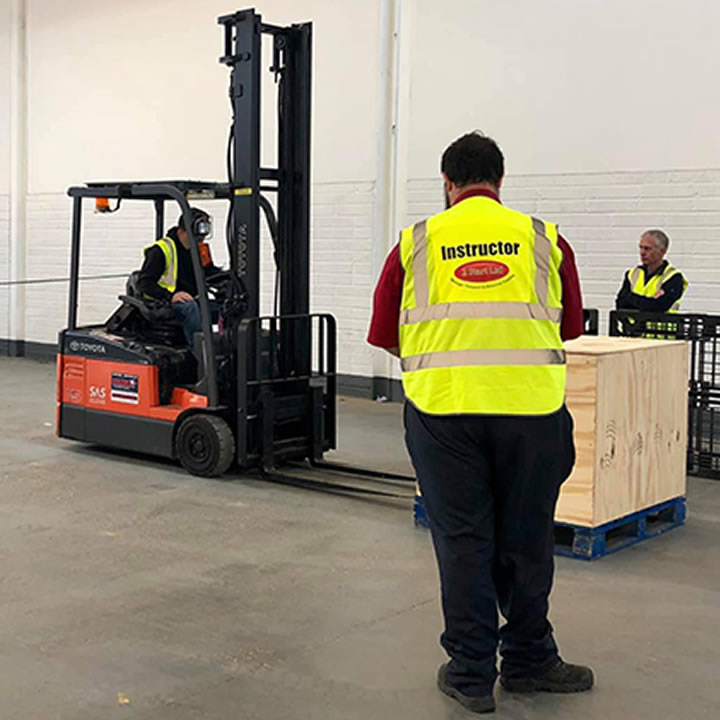A forklift can be a great asset to your company but with zero training and no certificates to prove you’re a qualified driver could land you in trouble. There are various certificates you can obtain. It’s a matter of finding the most user-friendly remote forklift trainer training that will work to equip you with the necessary knowledge you require. Here are the steps to getting your certificate:
1. Certificate type
Determining the type of certificate you need is the first place. Forklifts are of different types, and not all appear to be the same. The ones that are available in the market are meant to serve specific goals. Thus, for these particular reasons, there are several lift course documentations that you can obtain during your course. Several forklift trainer certificates include standard forklift certification, order picker,tow-motor substantiation, and all-terrain. It is good to do your research to see what certification you need.
As a law requirement, you are required only to operate on the forklifts you are qualified to handle. The standard forklift certification is the major certification program that most people go for because it covers almost all forklifts in the market. Formal forklift certification covers the type and variation of a forklift. There is the Order Picker stacker-truck License that permits operating vehicles that handle loads. It involves an individual remaining stationary while the shipment stays in constant motion. Then there is the All-terrain lift documentation that consists of the trainee operating the forklift on all lands under all weather types. So, choosing the appropriate certificate that suits you is just a matter of self-assessment. Consider the kind of tasks you perform. The company one is working for is their sole responsibility to ensure you get the proper training you require.
2. Signing up for certification
Forklifts are a backbone in almost all leading industries. It is an efficient tool in any organization as it helps to lift heavy loads. However, they can smoothly go from helpful to disastrous machines. It only takes a little mistake, and that’s it. To avoid these fatalities, it is prudent that one signs up for a certification course to better their skills, learn safety and health strategies before operating a lift vehicle.
There are many corroboration courses available. It could either be online or offline, depending on what the organization prefers. Some terms include;
- Forklift performance safety is a three-part forklift course aiming to provide checks for steering and cargo-handling. EdAPP covers all that pertains to lift vehicles effectively, travel and steering, and freight transportation.
- OSHA train, Basic side loader safety course, a coaching course with a full-package for workers to have general knowledge about types of stacker-trucks.This course also uses a physics concept that involves practicals to teach fundamental safety rules and strategies.
3. Taking Classes
The lift truck tutoring includes coursework on safety, OSHA rules, guidelines, requirements, navigating methodologies, forklift conservation, and all the necessary involvements. The classes may be conducted online or on the field. The duration usually takes 2-8 hours, depending on the course you’re undertaking. It may involve lecturers, videos and graphics, and written pamphlet materials.
4. Passing the exam
When you’ve gone through classwork, the next thing left is sitting for your written exam. The test is mandatory because it will decide whether you qualify for the next step or not. According to OSHA’s guidelines, a student should score at least 75% and above to proceed to the next level.
5. Finalizing interventionist couching
After passing the forklift examinations, you will require the next step to demonstrate what you have been practicing. A trainer should show you how to drive a lift vehicle; then, you practice until you become a perfect operator. The training’s key-touch-points are forklift inspection, loading materials, lifting loads, navigating tight spaces, and working on inclines, among others.
Another thing, the trainer should gauge your skills by grading you based on your performance. Lastly, your employer should evaluate you.
So why do you need to obtain a forklift certification?
Your company can enjoy tonnes of benefits with forklifts, but, minus tutoring, it is useless. Forklift training provides greater returns on Investments. This comes in the form of fewer injuries in the workplace. Furthermore, employees who get professional training can operate forklifts with ease and explore what it takes to master the arts. Forklift certification can also help a company to avoid OSHA penalties. According to OSHA, ANSI, and CSA, it is the sole duty of managers to issue a conducive, safe working environment for their workers. Any accidents involved, the employers would suffer for it severely. Training your workers and ensuring they follow OSHA’s demands will enable you to escape a hefty fine that costs $100,000 per violation.

